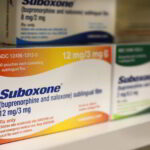Poor air quality can have a significant impact on your health, so it’s important to take steps to safeguard yourself. Taking the right precautions can help protect you from the harmful effects of air pollution, such as respiratory and cardiovascular illnesses. This article will provide information on how to protect yourself in poor air quality conditions, including tips on how to reduce your exposure to pollutants and how to stay healthy. By following these simple steps, you can ensure that you and your family remain safe and healthy in any air quality condition.
Understanding the Impact of Poor Air Quality on Health
Poor air quality can have a significant impact on human health. Air pollution is a mixture of solid particles and gases in the air. It can be both natural and man-made. Natural sources of air pollution include forest fires, volcanic eruptions, and windblown dust. Man-made sources of air pollution include vehicle exhaust, industrial emissions, and the burning of fossil fuels.
When air pollution levels are high, it can cause a variety of health problems. The most common health effects of poor air quality are respiratory and cardiovascular illnesses. Long-term exposure to air pollution can lead to an increased risk of developing asthma, bronchitis, and other respiratory illnesses. It can also increase the risk of developing heart disease, stroke, and other cardiovascular diseases.
In addition to respiratory and cardiovascular illnesses, air pollution can also have an effect on other aspects of health. It can cause eye, nose, and throat irritation, headaches, nausea, and fatigue. It can also worsen existing conditions such as allergies and asthma.
Children and the elderly are particularly vulnerable to the effects of air pollution. Children are more likely to be exposed to air pollution due to their smaller size and higher levels of physical activity. The elderly are more likely to be affected due to their weaker immune systems and existing health conditions.
It is important to understand the impact of poor air quality on health in order to reduce the risk of developing health problems. Reducing air pollution levels can be achieved by limiting the use of motor vehicles, using cleaner sources of energy, and implementing stricter regulations on industrial emissions. Additionally, individuals can take steps to reduce their own exposure to air pollution, such as avoiding outdoor activities during times of high air pollution and wearing a face mask when outdoors.
Taking Steps to Minimize Exposure to Pollutants
Taking steps to minimize exposure to pollutants is an important part of protecting your health and the environment. Pollutants are substances that can harm human health and the environment, and can come from a variety of sources, including air, water, and soil.
The first step in minimizing exposure to pollutants is to understand the sources of pollution in your area. Check local news sources and government websites for information about air, water, and soil pollution in your area. Knowing what pollutants are present and where they come from can help you take steps to reduce your exposure.
The next step is to limit your exposure to pollutants. If you live in an area with air pollution, for example, you can limit your exposure by avoiding outdoor activities when air quality is poor. You can also reduce your exposure to pollutants by avoiding products that contain hazardous chemicals. Choose natural, non-toxic cleaning products and avoid using pesticides or other chemicals in your home.
You can also take steps to reduce the amount of pollutants released into the environment. Choose energy-efficient appliances and lighting, and look for ways to reduce your energy consumption. Use public transportation or carpool when possible, and recycle or compost to reduce the amount of waste you produce.
Finally, you can support organizations and initiatives that are working to reduce pollution. Participate in clean-up events, join a local environmental group, or donate to organizations that are working to reduce pollution.
Taking steps to minimize exposure to pollutants is an important part of protecting your health and the environment. By understanding the sources of pollution in your area, limiting your exposure, reducing the amount of pollutants released into the environment, and supporting organizations that are working to reduce pollution, you can help make a difference.
Wearing Appropriate Protective Gear
Wearing appropriate protective gear is an important part of staying safe and healthy in any environment. Whether you’re working in a hazardous environment, participating in a sport, or just doing everyday activities, wearing the right protective gear can help protect you from injury and illness.
Protective gear can range from simple items like safety glasses and earplugs to more complex items like helmets and body armor. Depending on the activity or environment, the type of protective gear you need will vary. For example, if you’re working in a construction site, you may need to wear a hard hat, safety glasses, and steel-toed boots. If you’re participating in a sport, you may need to wear a helmet, shin guards, and mouth guard.
It’s important to make sure that the protective gear you’re wearing is appropriate for the activity or environment. Make sure that the gear fits properly and is in good condition. If the gear is damaged or worn out, it won’t provide the same level of protection.
In addition to wearing the right protective gear, it’s also important to practice good safety habits. Follow all safety instructions and be aware of your surroundings. If you’re participating in a sport, make sure you’re following the rules and using the proper techniques.
By wearing the right protective gear and practicing good safety habits, you can help protect yourself from injury and illness. Taking the time to make sure you’re wearing the right protective gear can make a big difference in your safety and well-being.
Utilizing Indoor Air Quality Solutions
Indoor air quality solutions are designed to improve the air quality inside a home or office. Poor air quality can lead to a variety of health problems, including allergies, asthma, and respiratory illnesses. Utilizing indoor air quality solutions can help to reduce the amount of pollutants and allergens in the air, making it easier to breathe and reducing the risk of health problems.
Indoor air quality solutions come in a variety of forms, including air purifiers, air filters, and air cleaners. Air purifiers are designed to remove particles from the air, such as dust, pollen, and pet dander. Air filters are designed to trap and remove larger particles, such as mold spores and smoke. Air cleaners are designed to reduce the amount of volatile organic compounds (VOCs) in the air, which can cause headaches, nausea, and other health problems.
When selecting an indoor air quality solution, it is important to consider the size of the space that needs to be treated. Different solutions are designed to treat different sized areas, so it is important to select the right one for the space. Additionally, it is important to consider the type of pollutants that need to be removed. Some solutions are designed to remove specific types of pollutants, while others are designed to remove a variety of pollutants.
Once the right solution has been selected, it is important to install it properly. This includes ensuring that the air filter is the correct size for the space and that the air purifier is installed in the right location. Additionally, it is important to regularly maintain the air quality solution to ensure that it is working properly. This includes changing the air filter regularly and cleaning the air purifier as needed.
Utilizing indoor air quality solutions can help to improve the air quality in a home or office, making it easier to breathe and reducing the risk of health problems. By selecting the right solution and installing it properly, it is possible to create a healthier environment for everyone.
Seeking Medical Attention for Health Concerns Related to Poor Air Quality
When air quality is poor, it can have a negative impact on your health. Poor air quality can cause a variety of health problems, including respiratory illnesses, allergies, and cardiovascular diseases. If you are experiencing any health concerns related to poor air quality, it is important to seek medical attention.
The first step in seeking medical attention for health concerns related to poor air quality is to consult your primary care physician. Your doctor can evaluate your symptoms and determine if they are related to air quality. They can also recommend any tests or treatments that may be necessary.
In addition to consulting your primary care physician, you may also want to consider seeing a specialist. A pulmonologist is a doctor who specializes in respiratory diseases, and they can provide specialized care for air quality-related health concerns. An allergist is another type of specialist who can help diagnose and treat allergies caused by poor air quality.
If you are experiencing any of the following symptoms, it is important to seek medical attention: difficulty breathing, chest tightness, coughing, wheezing, fatigue, headaches, or eye irritation. These symptoms can be caused by a variety of conditions, and it is important to have them evaluated by a medical professional.
It is also important to be aware of the air quality in your area. If the air quality is poor, you may want to limit your outdoor activities and stay indoors as much as possible. You may also want to consider using an air purifier to help reduce the amount of pollutants in your home.
If you are experiencing any health concerns related to poor air quality, it is important to seek medical attention. Your doctor can evaluate your symptoms and determine the best course of action. They can also provide you with tips and advice on how to protect yourself from the effects of poor air quality.
Taking steps to safeguard your health in poor air quality conditions is an important part of living a healthy lifestyle. Simple measures such as avoiding outdoor activities, wearing protective masks, and keeping indoor air clean can help reduce the risk of respiratory and other health problems. Additionally, staying informed about air quality levels and taking advantage of available resources can help you stay safe and healthy during periods of poor air quality.











